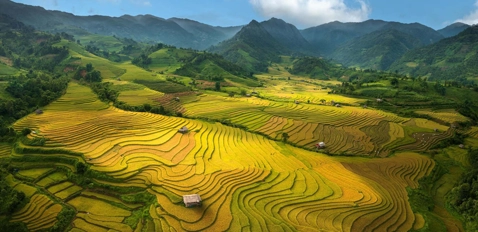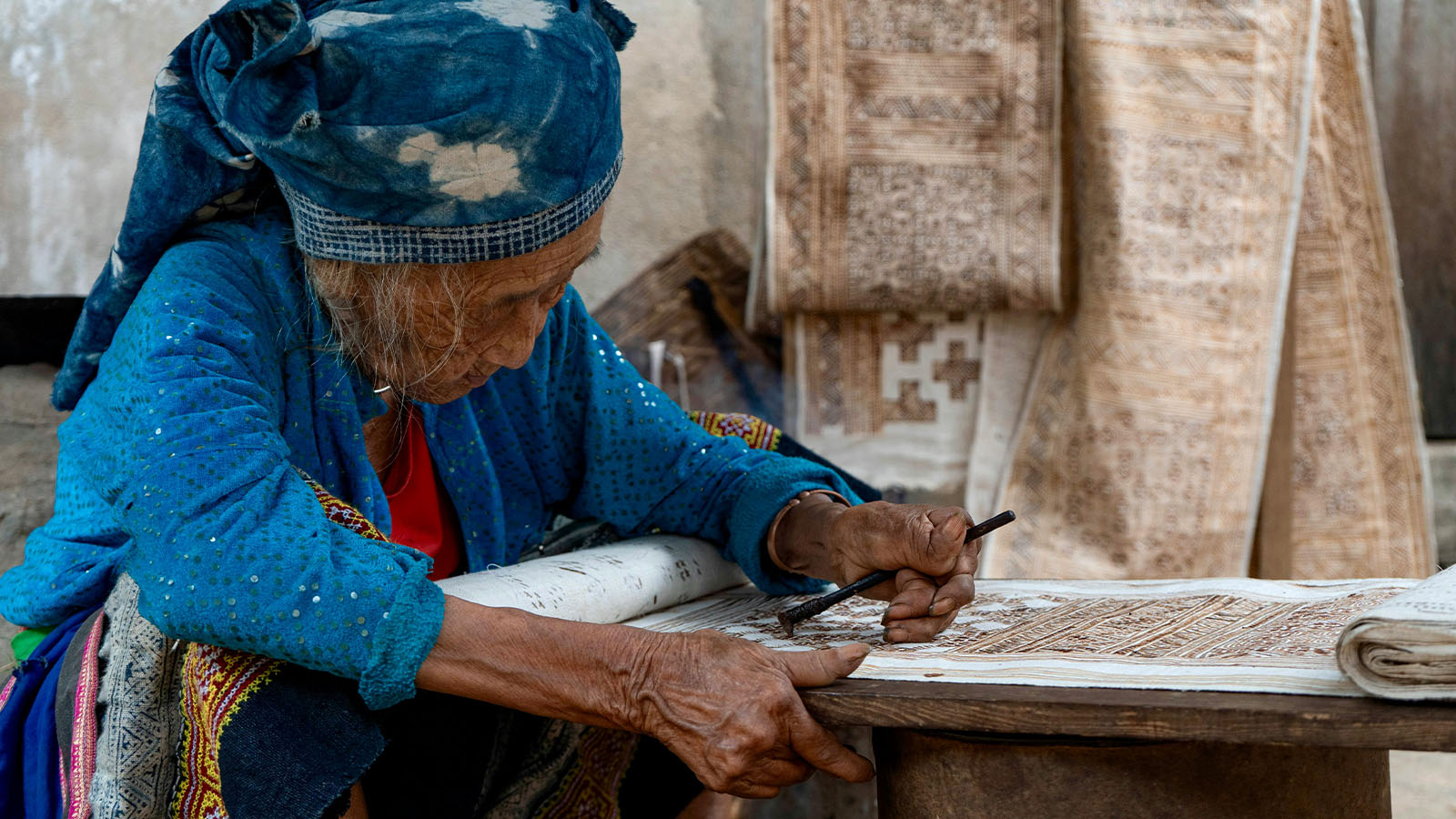What to Wear in February in Vietnam for Every Region
Vietnam is a great country to visit in February. The weather is milder and more comfortable than in the summer months. The skies are clearer in many regions, and the Tet holiday (Vietnamese Lunar New Year) often falls in February, bringing a special atmosphere. Streets are colorful, families gather, and markets are full of traditional food and flowers. You can enjoy both nature and culture at this time of year.
But Vietnam stretches over a long distance, so the weather is not the same everywhere. It can feel cold in the north, warm and sunny in the south, and somewhere in between in the central region. You’ll need to pack wisely. In this article, we’ll help you figure out what to wear in February in Vietnam for every region. Whether you’re heading to the mountains, the coast, or the big cities, we’ll give you clear and honest tips.
Is it cold in Vietnam in February?
Vietnam in February is a comfortable place to travel. The weather is not too cold or too hot, but it changes a lot depending on the region. You need to understand how the north, center, and south of Vietnam feel in this month before you decide what to pack.
In Northern Vietnam, February is still winter. Cities like Hanoi, Ninh Binh, Sapa, and Ha Giang are often cold in the early morning and evening. The temperature in Hanoi usually stays between 15°C and 22°C. In Sapa or Ha Giang, it can drop below 10°C at night. Some days are cloudy and humid, which can make the air feel colder than the actual temperature. You probably won’t see much sunshine. It’s good to prepare for chilly, damp weather.
In Central Vietnam, places like Hue, Da Nang, and Hoi An have better conditions in February. The heavy rains are mostly gone. The temperature is mild, often between 20°C and 26°C during the day. You might still catch a few rainy days, but most of the time, it’s pleasant enough for walking, sightseeing, and even spending time on the beach. Early mornings and nights can feel cooler, but not too cold.
In Southern Vietnam, it’s dry season. Cities like Ho Chi Minh City, Can Tho, and Phu Quoc are sunny and warm. Temperatures are usually between 25°C and 32°C. There’s little rain, the air is clear, and the weather is great for outdoor activities. February is also one of the best months to enjoy Vietnam’s southern beaches and floating markets.
Another thing to keep in mind is Tet, the Vietnamese Lunar New Year, which often falls in February. During this time, the whole country celebrates. Cities become lively with flowers, lanterns, and local food. However, some shops and restaurants may close for a few days. It’s a good idea to check your travel dates with the Tet calendar so you can prepare better.
What to Wear in February in Northern Vietnam
If you're heading to Hanoi, Ninh Binh, or Sapa in February, you need to pack warm clothes. The weather is still cool, and some days feel damp or foggy. In Sapa or Ha Giang, it can get very cold at night and early in the morning. You won’t need a thick winter coat, but you do need a warm jacket, especially for mountain areas.
Bring a few layers. Long-sleeve shirts, thermal tops, and sweaters work well. You can remove or add them depending on the temperature. A windbreaker or a light waterproof jacket is also helpful. Sometimes it drizzles, and you’ll want to stay dry.
Pack long pants, jeans, or leggings. Avoid shorts and thin skirts—they won't be useful this time of year. Also, wear closed shoes or waterproof sneakers if you’re walking around a lot. If you plan to hike or go on a motorbike tour in the north, pack gloves and a scarf. The cold wind can be uncomfortable if you're not prepared.
What to Wear in February in Central Vietnam
The weather in central Vietnam is much easier to manage. If you're visiting Hue, Da Nang, or Hoi An, you'll get mostly dry days with cool mornings and evenings. You don’t need heavy clothing, but you should still pack a few layers. A long-sleeve shirt or a light sweater will keep you comfortable at night.
For daytime, short-sleeve shirts and lightweight pants are enough. You can wear dresses, skirts, or even shorts when it’s sunny. If you're planning to spend time on the beach, bring a swimsuit. It’s not always warm enough to swim, but some days are perfect for it.
Don’t forget to pack a light jacket, just in case it rains or gets chilly at night. A foldable umbrella is also a good idea. Comfortable walking shoes or sandals are fine for exploring. Just avoid slippery soles if you expect rain or wet streets.
What to Wear in February in Southern Vietnam
Southern Vietnam is warm and sunny in February. If you're visiting Ho Chi Minh City, the Mekong Delta, or Phu Quoc, bring light clothes made from cotton or linen. T-shirts, tank tops, shorts, skirts, and light dresses are all good choices.
You don’t need jackets or sweaters here. You might want a thin long-sleeve shirt for sun protection during the day or air-conditioned spaces. A hat, sunglasses, and sunscreen are must-haves. The sun can get strong, especially in the afternoon.
Wear sandals or breathable shoes for walking. If you're visiting temples or pagodas, pack at least one outfit that covers your shoulders and knees. Lightweight trousers or a long skirt with a loose shirt works well. Also, a scarf or shawl is useful when you want to dress modestly but still stay cool.
February is a great time to enjoy the beach in the south, so bring a swimsuit, flip-flops, and something easy to wear over your swimwear. The weather won’t hold you back here. Just pack smart, stay cool, and drink lots of water.
Accessories & Extras to Pack
Besides clothes, you should pack a few extra items to make your trip more comfortable.
Scarf: A lightweight scarf is useful in the north for warmth and in temples anywhere in Vietnam to cover your shoulders.
Umbrella or Poncho: Rain is not common in February, but weather can be unpredictable, especially in the north. A small umbrella or foldable rain poncho doesn’t take much space.
Sunscreen: You’ll need sunscreen in the south, and even in the central region if you spend time outdoors. The sun is strong during midday.
Sunglasses and Hat: These are essential in the south and helpful in central Vietnam. A wide-brim hat is better than a cap for full face protection.
Insect Repellent: It’s especially useful if you visit rural areas or stay in homestays near rivers or rice fields.
Hand sanitizer and tissues: Not every public bathroom will have them. Keep a small supply in your bag.
Power adapter: Vietnam uses plug types A, C, and D, and the voltage is 220V. Bring a universal adapter if your plugs are different.
If you want to travel light, consider bringing detergent sheets for washing small items like underwear or socks in your hotel room.
Tips for traveling in Vietnam in February
February is one of the best months to visit Vietnam, but there are a few things to keep in mind:
Be aware of the Tet holiday: The Lunar New Year (Tet) often falls in February. It’s Vietnam’s biggest holiday. Many shops, restaurants, and local businesses may close for a few days. Transportation can get crowded before and after Tet, so book your tickets early. On the other hand, this is a great time to experience local traditions and celebrations if you don’t mind the crowds.
Dress modestly for temples and festivals: During Tet, you’ll see many people visiting pagodas and family altars. If you go, wear respectful clothes. No tank tops or short shorts. A light scarf or long skirt is useful for quick coverage.
Pack for different climates: Don’t assume the whole country has the same weather. Northern Vietnam can be cold, while the south is hot. Check the forecast for each place you plan to visit and pack accordingly.
Book accommodations early: If you travel during Tet, book hotels ahead of time. Many locals also travel, and popular areas like Hoi An or Sapa can fill up quickly.
Stay hydrated: It may not feel hot in the north, but dry air can dehydrate you. Always carry a refillable water bottle.
Cash is still important:Many small restaurants or shops don’t take cards, especially during Tet when banks close. Have enough Vietnamese Dong with you.
With the right clothing and a bit of planning, your February trip can be smooth, comfortable, and unforgettable.
FAQs
Is it cold in Vietnam in February?
It depends on the region. In the north, especially in places like Hanoi or Sapa, February can feel cold. Temperatures can drop to around 10–18°C (50–64°F), especially in the early morning or at night. In the central and southern parts, the weather is usually warm during the day and cooler at night. You won’t need heavy winter clothes, but long sleeves and a light jacket are helpful in the north.
Is it too hot to wear jeans in Vietnam?
Not in February. Jeans are fine in northern and central Vietnam this time of year. The weather is cool enough for them, especially in the evening. In the south, it might feel a bit warm during the day, but you can still wear jeans in the morning or if you stay indoors. Choose lighter denim or bring loose cotton pants as an alternative.
Can I swim in Vietnam in February?
Yes, but it depends on where you are. In the south (like Phu Quoc or Ho Chi Minh City), the weather is warm and perfect for swimming. In central Vietnam (like Da Nang or Hoi An), the water can feel chilly, but some people still enjoy the beach. In the north, it’s too cold to swim outdoors. Pools in some hotels may be heated, but not all are.
What to wear in Sapa in February?
Sapa is cold in February. You’ll need a warm jacket, especially if you’re going trekking. Bring thermal layers, a sweater, and long pants. A windbreaker or waterproof jacket is also good if you’re outside for long hours. Gloves and a scarf can help too, especially early in the morning or at night.
Which part of Vietnam is best to visit in February?
Central and southern Vietnam are the best regions to visit in February. The weather is pleasant and there’s little rain. Places like Hoi An, Da Nang, Nha Trang, and Phu Quoc are great this time of year. You can enjoy beaches, festivals, and local food comfortably. Northern Vietnam can still be nice, but it is colder and sometimes foggy.
How hot is Hanoi in February?
Hanoi is not hot in February. It usually stays around 15–20°C (59–68°F), and it can feel colder with fog or wind. You should wear long sleeves, light sweaters, and a jacket. It’s not freezing, but it’s far from tropical. Bring layers you can add or remove during the day.
Conclusion
February gives you the chance to see Vietnam at a calm and beautiful time. It’s the season for fresh air, fewer crowds in some places, and meaningful local celebrations. You don’t need to carry heavy winter gear, but smart packing will make your trip easier and more enjoyable. We hope this guide helps you understand what to wear in February in Vietnam for every region so you can stay comfortable and confident.
If you want to make the most of your trip, consider booking a tour with local guides. A well-planned tour helps you see more, worry less, and enjoy your time in Vietnam from north to south.
>>> What to Wear in March for Every Region
>>> Top 20 Festivals In Vietnam: Iconic Cultural Celebrations From North To South
Send us your comments about : What to Wear in February in Vietnam for Every Region
Required fields *
You might also be interested
Travel ideas
Need some inspiration? Discover some of the best tours in Vietnam, which are highly appreciated by our clients. An excellent starting point to help you choose the right trip to Vietnam, Laos, Cambodia, Burma or Thailand, whether you are traveling alone, as a couple, as a family or with friends.
And because this trip is yours, feel free to customize it as you wish!
Vietnam Cambodia Itinerary 14 Days
Hanoi – Hoa Binh – Mai Chau – Ninh Binh – Halong bay – Hue - Danang – Hoian – Saigon – Ben Tre - Can Tho – Saigon - Siem Reap Angkor - Tonlé Sap - Siem Reap – Ta Prohm - Departure
Vietnam 14 Day Itinerary
Vietnam 14-day itinerary covers the country’s top highlights and quintessential experiences for an unforgettable journey.
Honeymoon Tour Pakcages In Vietnam 12 Days
Saigon Arrival - City Tour – Mekong Delta – Danang – Hoian - by flight - Da Nang – Hanoi - by flight – Halong - overnight on junk – Departure
Authentic Hoang Su Phi Trekking Tours
Hoang Su Phi trekking tours take you to stunning terraces, meet few tourists, connect with locals and enjoy authentic culture.
Best Nha Trang Beach Tour 4 Days
Saigon/Hanoi – Nha Trang relaxation – Saigon/Hanoi – Departure
Mekong Delta Bike Tour Itinerary 7 Days
Cycle through the Mekong Delta in 7 days, discovering floating markets, orchards, craft villages, and tranquil green islands.
Are you interested in this tour?






































Comment